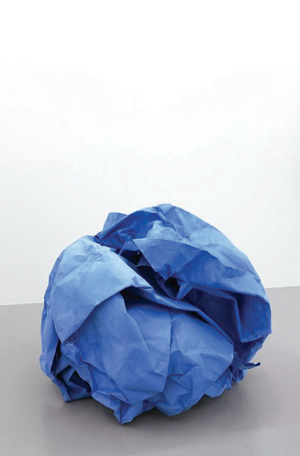
Few world events have been as beneficial for the artistic and cultural sector as the 2008 recession. It has encouraged artists to forgo competition for co-operation, prompted new managerial perspectives, and proved the strength and resilience of an industry too often perceived as vulnerable and dependent on hand-outs. To drive this point home, it takes little more than a quick look at the cultural landscape of one of the countries hardest hit by the crash, Iceland.
A healthy dose of anger and concern seized the Icelandic people as the country’s three main banks had to be bailed out by the government, plunging Iceland into deep national debt and economic recession. The fragility of the financial system was laid bare, while the strength of the cultural sector kept it afloat. With the perseverance of artistic producers and patrons, the Icelandic cultural industry continues to strive, despite the near-disappearance of governmental subsidies and the absence of corporate sponsorship.
That being said, the Icelandic art scene did not entirely escape the national downturn: promising initiatives such as the 101 Project managed by Birta Guðjónsdóttir had to close down; support for artists has suffered with the cancellation of the Icelandic Visual Arts Awards, run by the town of Akureyri in collaboration with two government ministries; and museums had to make significant changes to their programmes. Yet there has rarely been as much creative cultural management and artistic energy in the country. The Icelanders are doing something right.
Iceland may have been one of the world’s richest countries before the crash but, as it turns out, that wealth was rarely shared with the arts. With no incentives or tax deductions, corporate sponsorship was scarce and sporadic, while government interest in the arts was mild at best, generally leaving artists and museums to fend for themselves. The former Director of the Center for Icelandic Art, Christian Schoen, recalls how little governmental funding was granted for the creation of the centre in 2005. The centre had to seek out funding for its programmes on its own and make realistic decisions about how much it could do. As frustrating as it was for its directors, this independence from state subsidies made it more adaptable to the 2008 crash. By then it had learned to reach out to small businesses and individuals for support, and developed a managerial culture that supported modest and intelligently executed programs, rather than big flashy shows. In 2009, in the heat of the recession’s aftermath, the Center awarded a total of 3.6m ISK in grants to 40 artists. That same year, Iceland’s debt was greater than its national GDP, wages were cut across the board, the unemployment rate reached nearly 10% and the national currency was significantly devaluated. Nonetheless, the centre’s independence from the government’s headaches allowed it to pursue its mission.
Since the recession there has been an increase in co-operation among artists and the emergence of more socially engaged collaborative initiatives, such as the artist-run and internationally active Kling and Bang project. Kling and Bang recently participated in ‘NO SOUL FOR SALE’, an international event for non-profit centres and artist collectives to gather and exchange information on new strategies of distribution and organisation. Thus, artists are learning to self-manage in order to be less vulnerable to economic vicissitudes and become more autonomous.
Hafthor Yngvason, Director of the Reykjavik Art Museum, Iceland’s largest museum, says he crash resulted in a 15% to 20% decline in the museum’s income. The smaller National Gallery reported a decline of around 25%. Museums had to find ways to continue with less financial capital, including cancelling or rescheduling some of the costlier exhibitions planned. As a direct consequence of the economic downturn, the National Gallery and the Akureyri Art Museum did not hold exhibitions with foreign participants in 2009: “It simply becomes too expensive to freight their works and invite them personally,” explains Hannes Sigurdsson, director of the Museum. Thus, fewer shows were scheduled and all of them included work either by Icelandic artists or in Icelandic collections. Icelanders certainly didn’t seem to mind, as the Reykjavik Art Museum broke its attendance record in 2009 with 220,000 visitors (not bad for a country of 300,000 inhabitants). Today, three years after the crash, museum attendance remains high and international interest in Icelandic art has sharply risen.
Tight institutional budgets are giving Icelandic artists exposure. Unable to find affordable storage, the University of Iceland has hung its considerable collection of Icelandic art on all available wall space, turning its campus (including bathrooms) into a gallery.
Cultural leaders in Iceland now hope that the recession has opened people’s eyes to where the national capital really lies – not in bank vaults, but in the strength of well-supported artistic and cultural activity. This is a lesson that they learned the hard way by being consistently ignored by corporate and governmental budgets. We can continue crying over spilled milk and pointing fingers, or take pride in the fact that, with mindful policy adjustments and a touch of institutional soul-searching, the arts can be self-sufficient and free of the shackles of corporate sponsorship and cumbersome governmental crutches.

Join the Discussion
You must be logged in to post a comment.